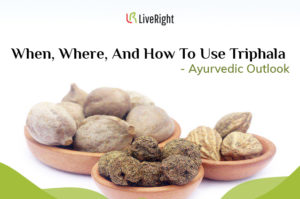Last updated on August 21, 2024 by Dr. Subashri Thanigaivel
Sakarai Pongal made with jaggery, a tasty dish to enjoy. If you’ve never tried this before, then you have missed something important.
The Joy Of Sweetness!
As you eat Pongal, you’ll also remember the great festival that comes along – and yes, the Pongal celebration is here!
An annual festival awaited just like farmers wait to harvest their crops. Also, there’s something interesting that you may or may not know.
The Pongal that is cooked on the day of the festival is made with the first bunch of rice harvested for the year. So this special reason adds a special flavor to this occasion marking the traditional way of Pongal celebration.

So what are you waiting for? Let’s cook Pongal together in our traditional way.
How Is Pongal Cooked? What Are The Ingredients Used?
Cooking Pongal in a traditional way is a ritual that every household would follow. Let me glimpse you through that traditional way of celebration.
The start of the “thai” month marks the beginning of the Pongal celebration. Also, have you ever noticed that the pot in which rice is cooked daily appears to be different on the day of Pongal? The pot is actually decorated with turmeric stalks (manjal kothu) tied around its neck and kumkum applied to it.

Sugarcane is now tied together and is laid in a triangular shape such that there’s a space in between to keep the pot and cook Pongal. Generally, in villages in Tamil Nadu, this setup is kept in front of the houses, and Pongal is cooked using firewood (viragu aduppu) in the presence of the sun. Recently, there’s been a shift from old to new – the modern state of mind. Cooking Pongal on the stove and tying sugarcane at the entrance of the house. But still, try your best to not lose your traditionality.
Ingredients used for Pongal preparation:
- Rice (white/red)
- Jaggery (unrefined)
- Ghee
- Milk
- Cashews and dry grapes
- Any other ingredients like moong dal, coconut, etc. to add more flavor and taste
Now, cook the Pongal exactly at the time when the “thai” month begins in the presence of the sun. It also marks the start of the “uttarayanam” period. The period at which the sun appears to be moving towards the north with respect to earth. This displays that sunlight is now abundant on our planet.
So you are actually welcoming the sun god to bring more happiness and good health. You also pray for an abundant and prosperous harvest for the year ahead.
Why Jaggery Though?

Since sweet Pongal is made on this special day to start the month and year with sweetness and happiness, jaggery is used to prepare it. Sometimes, for sweet taste, instead of jaggery people tend to use white or unrefined sugars. Pongal turns out to be sweet, but the essence of Pongal is lost that can only be felt when you make it with jaggery. Also, make sure to buy unrefined jaggery cubes. Because in recent days jaggery is also refined to make it much more pleasing in appearance.
Refined sugar takes a long time to get digested. Moreover, the Pongal made with sugar lacks the flavor that could be tasted only when made with jaggery.
Jaggery is a natural sweetener that is extracted from sugarcane juice. It also acts as a healthy replacement for refined sugars. And it is rich in iron and other minerals or vitamins with low sucrose content too. White sugars lost those minerals and vitamins during their refining process.
So preparing Pongal with jaggery adds many more health benefits to your body than refined sugars.
What Are The Benefits Of Jaggery? – An Ayurvedic Perspective
गुडः सक्षारमधुरो नातिशीतः स्निग्धो मूत्ररक्तशोधनो नातिपित्तजिद्वातघ्नो मेदःकृमिकफकरो बल्यो वृष्यश्च ||१६०||
पित्तघ्नो मधुरः शुद्धो वातघ्नोऽसृक्प्रसादनः |१६१|
सपुराणोऽधिकगुणो [१] गुडः पथ्यतमः स्मृतः ||१६१||
Ref:Su.Su.45/160-161
सुश्रुतसंहिता सूत्रस्थानम् ४५. द्रवद्रव्यविध्यध्यायः

Jaggery is sweet and slightly alkaline, not much cold either. It purifies your urine. It is also a natural blood (rakta) purifier too. It also mitigates Pitta and Vata dosha in your body. Any sugar variety can help you to quench your thirst and prevent you from vomiting, or fainting. Apart from that jaggery plays a role in curing blood disorders (rakta pitta).
The sugarcane juice solidified by boiling becomes jaggery. The old jaggery has much better qualities and it is highly wholesome.
So, watching the boiling rice mixed with jaggery and ghee rising up to reach the brim of the pot and simultaneously praying to the sun god is the start of the big fat festival. Welcoming the sun with sweet Pongal cooked with lots of love and blessing. So it is also necessary to cook Pongal in a traditional way with the right ingredients. And right ingredients not only represent the traditional essence but also speaks for the nutritional benefits for your health.
So feel the sweetness and happiness while you eat it. And let’s pray for a great harvest throughout the year.
Wishing you all a happy and healthy Pongal!




